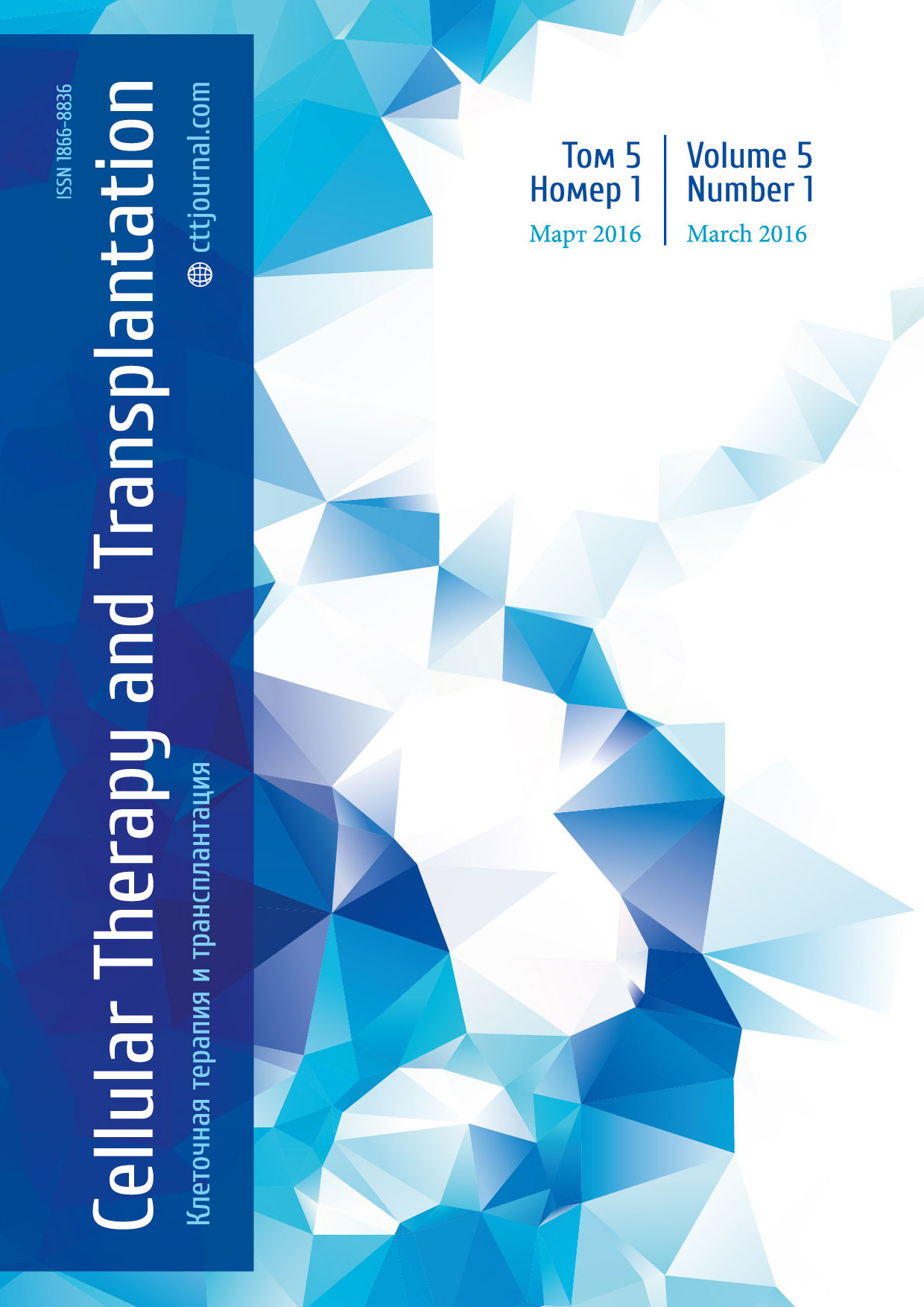Effective treatment of mixed viral infection in a patient after haploidentical stem cell transplantation
Larisa Vakhonina1, 2, Igor Vyatkin1, 2, Natalya Maysheva1, 2, Grigory Tsaur1, 2, 3, Oleg Medvedev1, 2, Leonid Saveliev1, 2, 3, Larisa Fechina1, 2
1 Regional Children’s Hospital No.1, Ekaterinburg, Russia
2 Research Institute of Medical Cell Technologies, Ekaterinburg, Russia
3 Ural State Medical University, Ekaterinburg, Russia
Summary
Background
Haploidentical stem cell transplantation (haplo-SCT) is often associated with reactivation of viral infections. Many of them do not have specific treatment approaches, especially in case of mixed viral infection. The aim of present study was to estimate the efficacy of diagnostics and treatment algoritm in a patient with mixed viral infection (Human herpesvirus 6, adenovirus, BK virus) after haplo-SCT. Methods. A 14-year boy with high-risk ALL underwent a haploidentical SCT being performed in the first remission. The transplant was depleted of TCRαβ/CD19 and infused after myeloablative conditioning regimen with Treosulfan 42g/m2, Fludarabin 150mg/m2, Melphalan 140g/m2, ATGAM 50 mg/kg. Post-transplant immusupression included Prograf 0.02 mk/kg started at day -1, Methotrexate 5mg/m2 at days +1, +3, +6. Antiviral prophylaxis consisted of intravenous acyclovir. Post-transplant viral monitoring (CMV, EBV, HHV6, adenovirus, BK virus in peripheral blood (PB), adenovirus in stool, BK virus in urine) was performed by both qualitative and quantitative PCR once a week.
Results
At the day +22, the HHV6 load equivalent to 2100 copies/ml was detected in peripheral blood, adenovirus found in stool, and BK virus was revealed in urine. Hemorrhagic cystitis grade I was noted, along with skin rush, and signs of meningoencephalitis (tremor, headache, 50х103 leucocytes/ml of liquor). Acute skin GVHD grade I was observed and confirmed by the skin biopsies. Simultaneously HHV6 was revealed by PCR at the same skin biopsy. Ganciclovir i.v. was initiated at a dose of 10mg/kg/day. Additionally, IVIG was administratered once in 14 days. This therapy led to slow recovery of meningoencephalitis and hemorrhagic cystitis symptoms. Meanwhile, HHV 6 was detected in liquor and persistence of adenovirus in stool and BK virus were observed by PCR. After a 3-week course of Ganciclovir in addition to HHV6 (2000 copies/ml), adenovirus and BK were found in PB. Cidofovir 5μg/kg i.v. was administered once a week together with Valacyclovir 500 mg b. i. d. After 1 week of Cidofovir administration, a significant reduction of HHV6 in PB was noted, whereas adenovirus and BK virus in PB were not detected anymore. A total of 5 Cidofovir injections were performed. Despite long persistence of BK virus in urine, the symptoms of hemorrhagic cystitis were not noted. Signs of meningoencephalitis resolved after 1 month of Cidofovir administration. HHV6 disappeared from liquor 2 month later. At present time, the patient is alive, with follow-up time of 2 years with established immunological reconstitution and lack of chronic GVHD.
Conclusions
In our Ganciclovir-resistant case with mixed viral infection, the Cidofovir treatment was highly curative. A systematic PCR monitoring helped us to timely launching of antiviral treatment and to monitor its efficacy.
Keywords
Haploidentical stem cell transplantation, viral infection, ganciclovir, cidofovir


